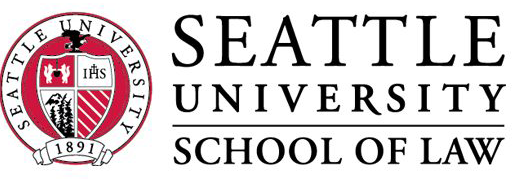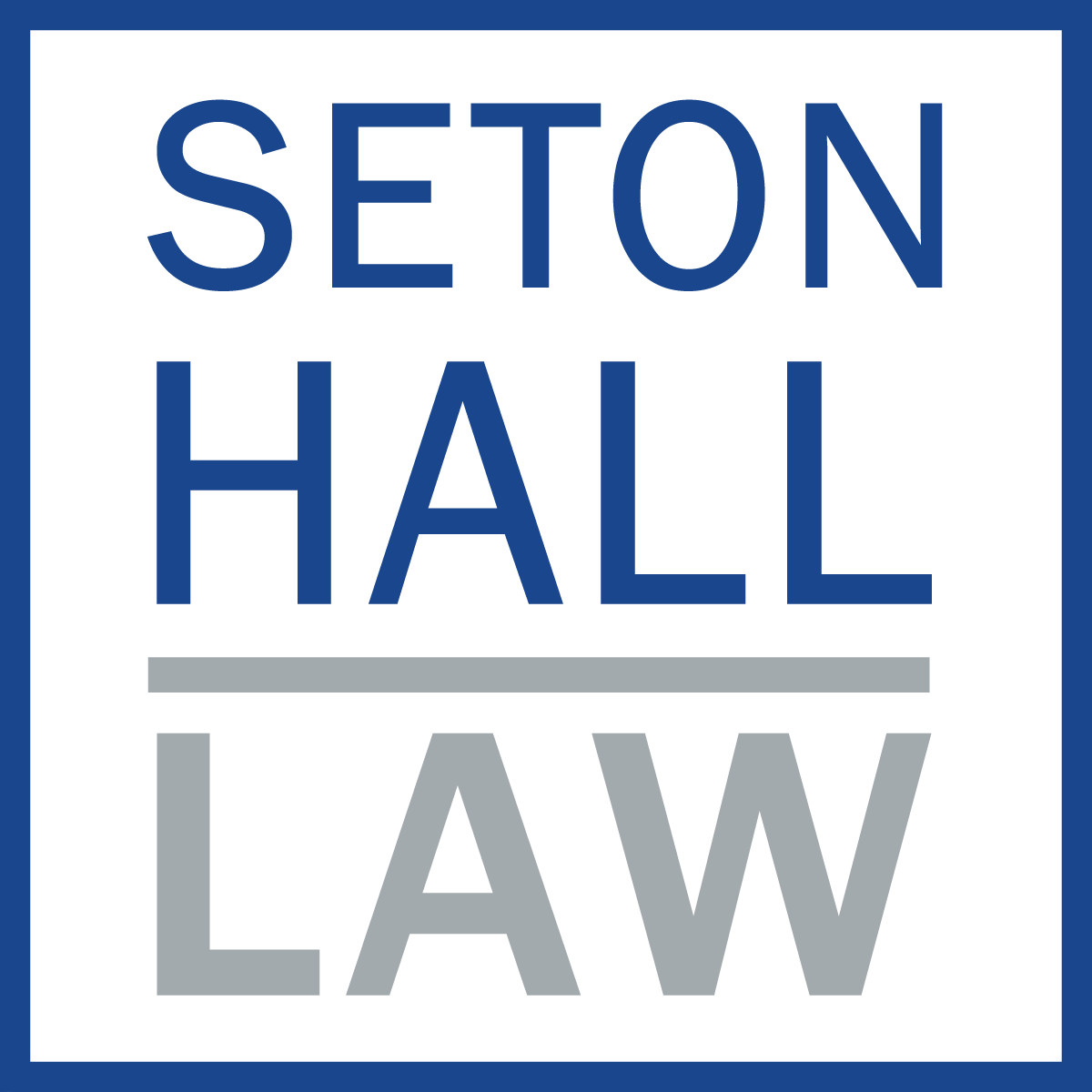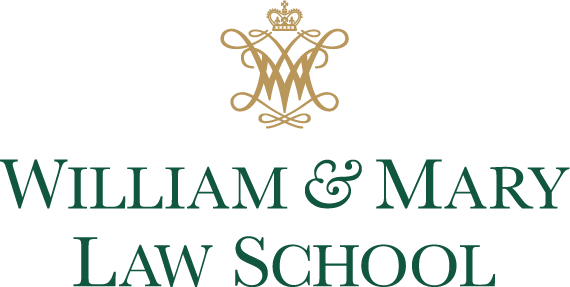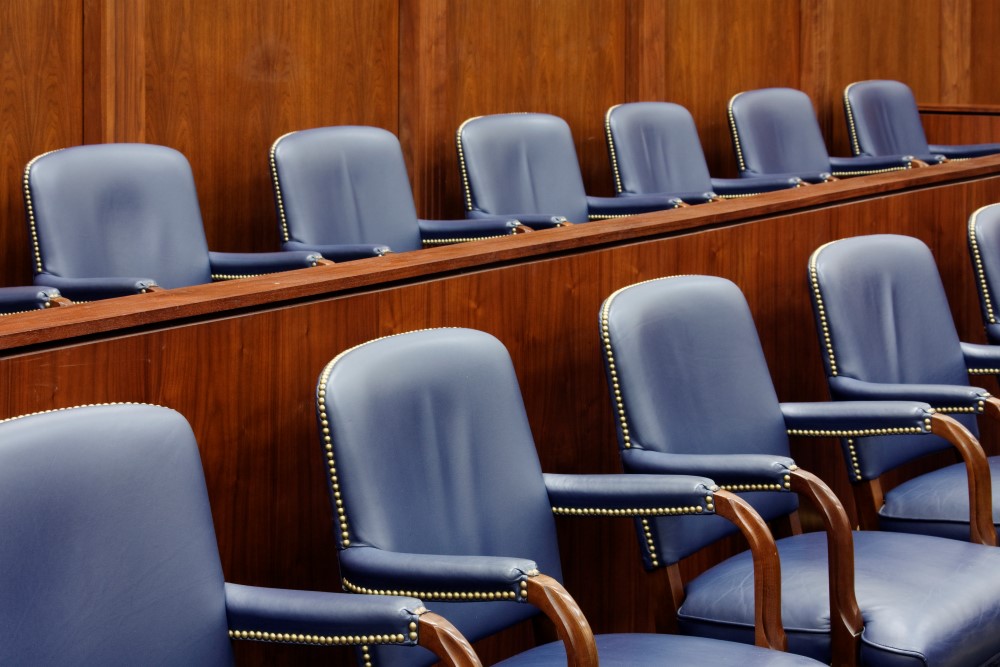Carlos Rosario is a patent lawyer who has twice switched law firms in Silicon Valley to strike his ideal balance between patent prosecution and patent litigation. Today, Carlos works for one of the largest intellectual property (IP) firms in the world. This interview illustrates the IP world to listeners generally—including whether certain IP lawyers need special credentials—before diving into the particulars of day-to-day practice. Carlos is a graduate of Santa Clara University School of Law.
Transcript
Host:
From LawHub, this is I Am The Law, a podcast where we talk with lawyers about their jobs to shed light on how they fit into the larger legal ecosystem. In this episode, Mike Spivey interviews a patent lawyer who works for one of the largest intellectual property firms in the world.
Mike Spivey:
We're joined today by Carlos Rosario. Carlos is a 2011 graduate of Santa Clara School of Law. His first job after law school was at a patent prosecution boutique in Silicon Valley. Carlos wrote patents at this law firm for a year and a half. Today he's an associate at the Palo Alto Office of Finnegan. With over 350 attorneys, Finnegan is one of the world's largest intellectual property law firms.
Before we get into what you do, Carlos, I want to talk a little bit about intellectual property generally. Traditionally, career counselors talk about IP in two very broad categories. First, there's soft IP. This includes copyright, trademark, trade secrets, et cetera. These jobs are relatively rare. Second, there's hard IP, otherwise known as patent. Within the patent world, you've got patent prosecution and patent litigation. You've done both prosecution and litigation. Maybe we can start with what a patent is before explaining the difference between patent prosecution and patent litigation.
Carlos Rosario:
A patent is a government granted monopoly on an invention that allows you to prevent other people from using, selling, or importing your invention. A patent attorney may write down what your invention is with a full enablement and disclosure. By turning into the patent office that puts the world on notice of this is how this invention works, and in exchange, an invention or now a company may have the rights over that patent and invention.
The difference between patent prosecution and patent litigation, the main difference is that patent prosecution refers to writing patterns, interacting with inventors and in-house counsel, and determining what you're going to include in a patent. Patent litigation on the other hand, is when a patent's already been granted. Typically, patent litigation refers to asserting the patent in federal court. Because patents are governed by federal law, all patent law is practiced in the federal court system.
Mike Spivey:
Can you give an example of a patent you've worked on recently?
Carlos Rosario:
So I've worked on patents mainly in the electronic field and software fields, and those range anywhere from mobile phones to mobile phone software to network devices. I've also worked on advertising, targeted advertising, I should say, search functions. I've worked on the cloud, optimizing cloud resources. I may write a patent that has to do with augmented reality, for instance. So augmented reality is where you use your phone and you can see the real world, but you may have objects overlaying the image that's showing up on your phone. And so, the patent may disclose how exactly those images are positioned within the real world to make them look like, appear as if they were actually part of the augmented reality.
And how those images are positioned can be based on a number of factors such as whether or not you have a various marker in the background, which is known as a fiduciary marker. And in addition, you may need to determine the positioning or the size of the object that you want to place in the background.
And so when you're writing a patent, you want to make sure that you include all that information in there. Now you'll want to get a broad patent, so you may apply for a patent saying that we place this object into this background based on these factors. And the more specific you get, the more likely your patent will not be disclosed by somebody else who's done something prior to that. However, at the same time, you want it very broad so that way you're able to capture any potential infringers and prevent them from practicing your invention.
Mike Spivey:
So it sounds like you've worked on some really sophisticated cutting edge stuff. Let's go back to the beginning then. You have a technical background. You're a programmer. You majored in computer engineering. You then received a Master's in computer engineering while working for an aerospace company. Is this the kind of background required for prosecution and/or litigation?
Carlos Rosario:
So for prosecution in the United States, you need to have a science background in order to sit for the United States patent examination, which is commonly known as the Patent Bar. So in order to write patents and practice before the patent office, you need to have taken and passed this test. To become a patent attorney, you need to have taken and passed this test as well as passing a state bar. As opposed to the patent litigation, you don't need to take a patent bar, you do not need a science background. You can practice in federal court just as you would with any other type of litigation.
Mike Spivey:
What about a patent agent?
Carlos Rosario:
So a patent agent is someone who has passed the Patent Bar and has not passed a State Bar. So, many people become patent agents and don't go to law school, and they can do everything that a patent attorney can, except there's some particular patent proceedings which you need to have passed the State Bar for. But for the most part, a patent agent can do everything that a patent attorney can other than litigate.
I've been at two smaller firms where there were a handful of patent agents. The firm I'm at right now, I know we have a few patent agents, but not in my particular office. So how a person goes from having a science degree and then passing the Patent Bar, becoming a patent agent, and then getting a job at a patent firm as a patent agent, I'm not too familiar with. It seems to me like the people that I knew sort of fell into it or were working somewhere where somebody suggested they take the Patent Bar and then they became patent agents. I've seen a lot of the chicken and egg problem where you need a job in order to get the experience, and without the experience, you can't get the job. Whereas if you're a patent attorney, it may be a little bit easier for you to get the job. Whether or not that's worth the price of law school, I'm really not sure.
Mike Spivey:
What kind of advantages does a lawyer have over a patent agent?
Carlos Rosario:
So I think a patent attorney, you have a few more advantages as far as if you're looking for a job at a law firm. They may appreciate attorneys more because you're able to go to appeal a ruling by the patent office to the federal circuit, or you may be able to litigate the patents in court. And also, I think that if you are a patent litigator and a patent prosecutor, then you may have a better understanding of how to write patents if you've seen them torn apart in a courtroom.
Mike Spivey:
Your career progression has been very deliberate. Can you talk a little bit about why you made the career moves you did? First from the prosecution boutique to Novak Druce and then from Novak to Finnegan.
Carlos Rosario:
So, I came into law school, I knew I had an idea that I wanted to practice either cyber law or patents or something to that effect. As you mentioned during the introduction, sometimes it's a little bit difficult to get jobs in a very niche field such as cyber law or even trademarks or copyright for that matter. But with patents, there were quite a few jobs especially here in the Silicon Valley.
So when I came out of school, I knew that I wanted to do patent practice. During law school I had worked for a federal court judge and worked on some patent cases and I had a pretty good idea that I wanted to do patent litigation. Unfortunately, I came out during the great recession. I had a little bit of trouble finding a job at the beginning, so I started at a patent boutique where I drafted patents. And I think that really helped with my career as I progressed. So I went from the patent boutique to another firm where I got a little bit of litigation experience. After that firm, I moved to this firm Finnegan, which had a much larger IP litigation practice. And so now, my current practice is only about 30% patent prosecution and probably more 70% patent litigation. And I'm enjoying it very much.
Mike Spivey:
Well, let me not ask a leading question. You went from two smaller firms to a large-sized firm, and at the large-sized firm, you're now doing a lot more litigation. Is there a reason for this? In other words, did you need to go to Finnegan to do more litigation?
Carlos Rosario:
Yes. I think it's difficult for a patent prosecutor to transition into patent litigation. Typically, it's the other way around. Of course, litigation has a schedule that's often unpredictable while patent prosecution has a schedule that you can more or less manage. Working with a patent office, it's a government entity, it's very much nine-to-five if you want to structure your career that way. Whereas patent litigation as with other litigation, sort of takes over your schedule and can cause a lot more headaches. So I see a lot of veteran attorneys doing a little bit more prosecution as they want to stay at home with their families and whatnot.
Mike Spivey:
Could you do patent litigation at a small firm?
Carlos Rosario:
Patent litigation in a small firm would be, I would imagine would be difficult, although I know of a few small patent litigation boutiques. Mainly because your average patent case will cost around four and a half million dollars up until the time it goes to trial. So typically the team in a patent case is pretty large. There's a substantial amount of discovery. In addition, the cases will usually last three, four or five years. So with patent litigation, it's a little bit tougher if you're at a small firm because you really need the support staff. It's a pretty vast body of loss, so it helps to have other attorneys that you can bounce ideas off of. And I haven't seen many small firms that are very successful at patent litigation.
Mike Spivey:
What is it about litigation that you prefer to prosecution?
Carlos Rosario:
I don't have kids yet, and I'm still in the beginning of my career. I think I enjoy the combative aspects of litigation. I enjoy working with opposing counsel, working on a team of litigators to develop our strategy and how we're going to either bring a patent suit against another entity or defend against a patent suit brought by another entity or perhaps a patent troll. And that can involve trying to invalidate the patent or show that our client's invention does not infringe upon their patent. And that requires a lot of work and a lot of teamwork, and I enjoy that part. I think patent prosecution is typically a little less team-oriented because you basically interview a inventor or an in-house council, talk about the invention, and then you write the patent. And you don't necessarily need to have as big of a team to write patents. And I really enjoy the camaraderie, I think, when we're doing litigation,
Mike Spivey:
We've talked a little bit about litigation, but I'm also curious about the prosecution process, who you work with, who does what, how it gets approved before you submit it to the USPTO, all the fun stuff. Just take us through the process.
Carlos Rosario:
So I think your typical prosecution job will involve working for a firm that can be anywhere between two attorneys to a few hundred attorneys. The first firm I worked at had 15 attorneys in it, and we would receive work from a tech company out here. And we would go to the tech company, interview the inventors alongside the in-house council at the tech company. Usually we would record what the inventor's idea was. We'd come back, really talk to your partner, or your boss if you're a junior, about what the invention encompasses, make sure you're on the right track, and then begin drafting all the parts of a patent, which includes the figures of the invention that show what the invention is, a specification which describes all the details of the invention. And then at the end of a patent, you also write claims, which are basically the meets and bounds of what your invention is.
So much like regular property where you would have a fence around your property, the claims are a fence around what your invention is. And then you would submit that for approval from the in-house council or the inventor. And once you have that approval, you submit that to the patent office.
Mike Spivey:
So how does patent litigation differ from traditional litigation?
Carlos Rosario:
Federal litigation is federal litigation. Your discovery process is going to be the same. Your complaints, your motions to dismiss, your experts are going to be the same. You're going to use a similar process to retain them and propound discovery and that sort of thing.
I think some of the unique aspects of patent litigation is that it typically takes a lot longer. Your average patent case would take a lot longer than maybe a different type of case. For instance, when you're in patent litigation, after you receive a complaint or if you're getting sued, what you may want to do is apply for a re-examination. And that's where you send the patent that's being asserted against your client to the United States Patent Office so it can be reexamined. And there, you will try to argue that the patent is unenforceable because it's invalid and it may be invalid because it's ambiguous or vague. It may be invalidated because there's prior art and the patent wasn't novel in the first place. And you may assert that the patent office rubber stamped the patent. And that process usually takes about a year.
So after litigation starts, you're going to have your case stayed for about a year so the patent can be reexamined. After that year, if it gets through the reexamine, its claims are still intact, which is I believe only about 50% of the time all the claims will come out still intact after reexamination, then you start the discovery process. One of the other unique aspects of patent litigation is you typically have what's called a markman hearing, and that has to deal with claim construction. So when you have words in your claims that may be unclear or may have multiple meanings, you'll have an entire hearing. Each side will submit briefs on what they believe the claims to mean, and the judge at the end of the day, as a matter of law, will decide what the claim language should actually say and what it should mean.
And a lot of times your cases will settle after that hearing. Because frequently these patent litigation cases will hinge on one word such as what is the meaning of user implemented. And then if you get past that, then you would go into trying to figure out what prior art you may want to use, or patents that have been published earlier. You may want to use to try and attack the patent at the district court level and invalidate the patent there or argue that you don't infringe there.
Now because these cases cost so much, at this point you've probably spent around $3 or $4 million, which is worth it since the judgments in these cases are often very high. At that point, you may go to trial or you may file for summary judgment. And regardless of the outcome, these cases are often appealed to the federal circuit. But rather than appealing to your circuit court, I'm in California, we would appeal to the 9th Circuit, patents actually all go to the Court of Federal Appeals in Washington D.C. So because there's so much money on the line in these cases, they're typically appealed. And the Federal Circuit will often reverse a judge's claim construction decision or holding. And that actually happens about 40% to 50% of the time. So there's a lot of incentive for plaintiffs to go appeal if they lose and try to get the claim construction reversed. So I've known associates who've spent their entire associate career on the same case.
Mike Spivey:
At the district level, have you seen a difference between the courts and judges from one versus another?
Carlos Rosario:
Certainly. I think various districts are more patent-friendly than others. For instance, I'm in the Northern District of California. It's sort of known as being a, whether this is correct or not, an anti-patent district. And I think the courts here may be more likely to invalidate a patent or the juries here, at least. Conversely, the Eastern District of Texas is a very popular venue for plaintiffs who want to bring patent suits for a number of reasons, including the fact that some of the judges there really like to speed along these patent cases and they may even deny a stay of litigation for a re-examination. So a lot of plaintiffs tend to, or patent trolls tend to sue people in the Eastern District of Texas of all places or perhaps the Eastern District of Virginia.
Mike Spivey:
What, what's a patent troll? You brought that up a couple times. I'm fascinated by the terminology.
Carlos Rosario:
They're also known as non-practicing entities. So these are companies that will procure patents by either buying them or some even have departments within them where they just think about what may be popular in 20 years and apply for their own patents. And then, rather than make or produce anything, they will use a licensing model where they will tell companies that they either need to license their patent or they will get sued. And some people sort of view this as extortion because this company does nothing with this patent other than charge people for using the patent.
Mike Spivey:
We've talked about prosecution and now that you're at Finnegan, I know you've been doing about 70% litigation. Can you elaborate a little bit on what your responsibilities are now? Are you in court? What are you doing on a daily basis at Finnegan, particularly in respect to litigation?
Carlos Rosario:
With my practice here, I mean, I suppose it's not much different than litigation anywhere else. I only recently started at Finnegan, so mostly I've been working on research, motions in limine, on cases that are already in progress, discussing discovery technique, preparing for depositions, and that sort of thing. At previous firms I've been at, I've run the gamut from proposing what the claim should be construed as prior to a claim construction hearing, preparing fact witnesses, expert witnesses on whether they think a particular patent infringes on a particular invention. I mean, it's the same thing as everything else, but I like it because there's a lot more money on the line. These are a make or break company lawsuit.
Host:
I Am The Law is a LawHub production. Don't forget to subscribe and rate this show on your favorite podcast app.

 Mike Spivey
Mike Spivey






